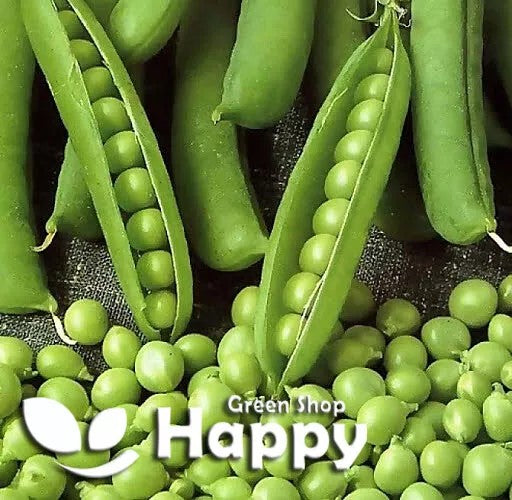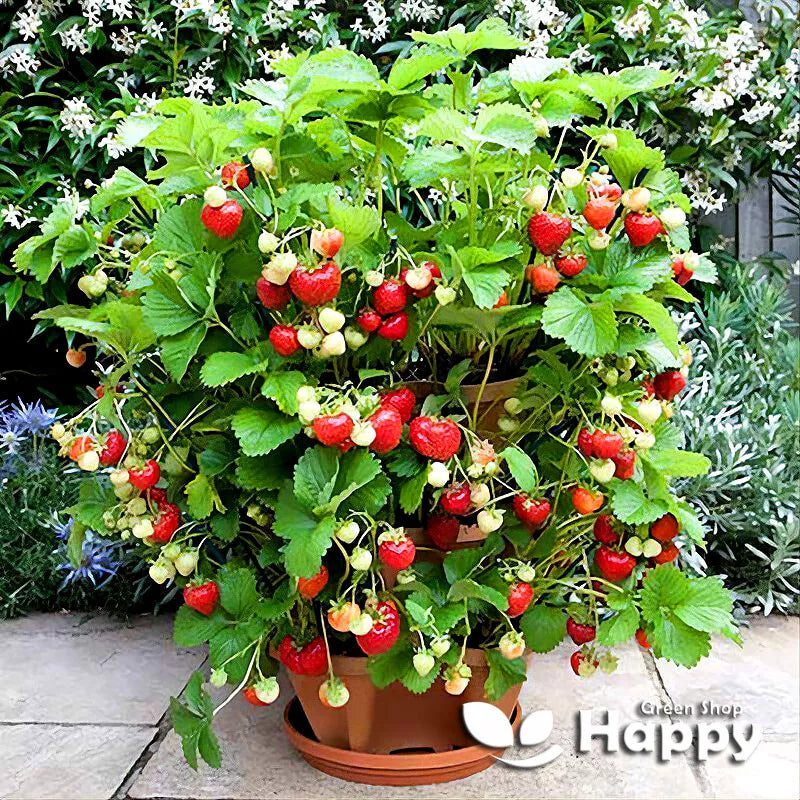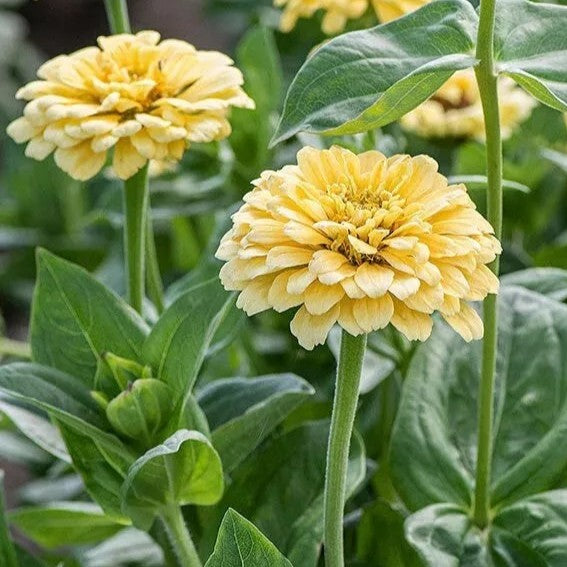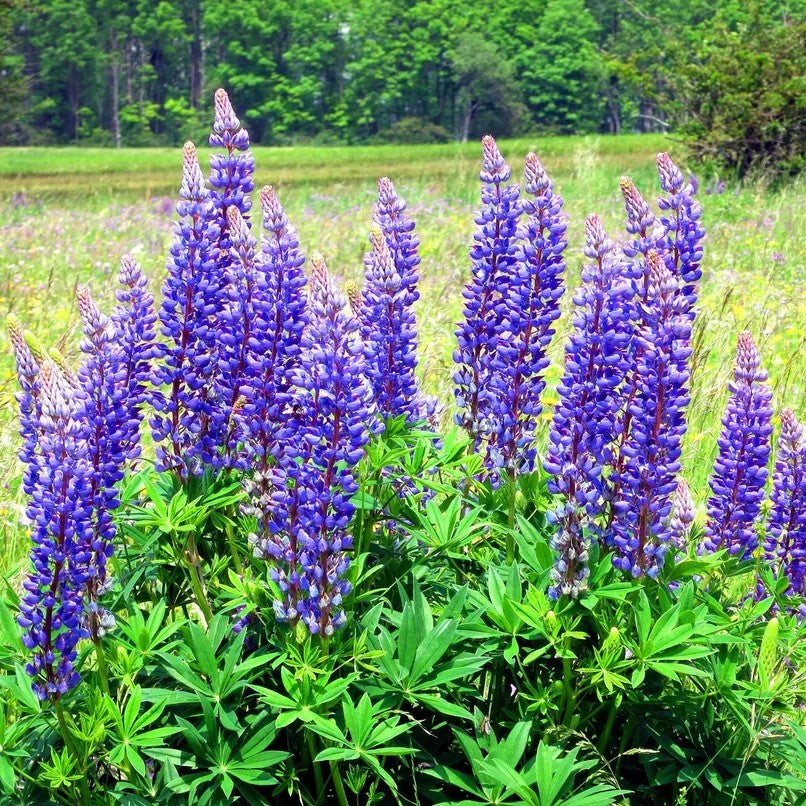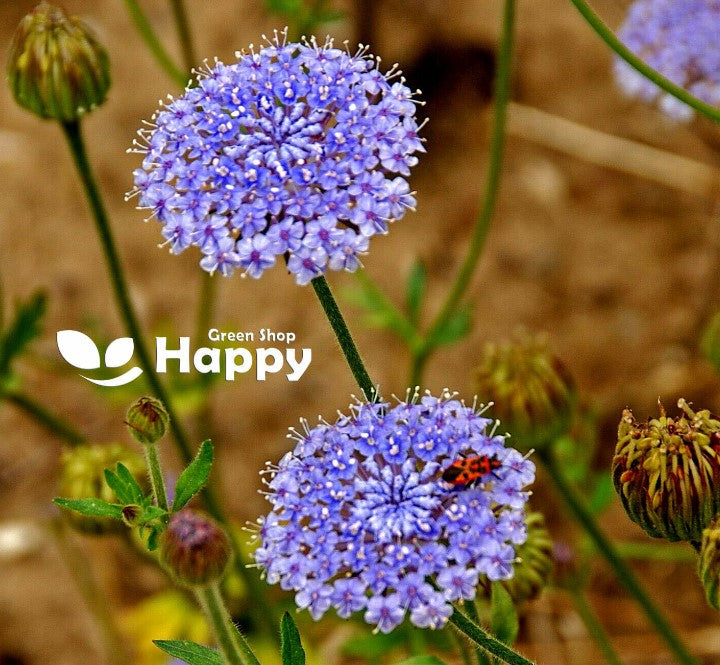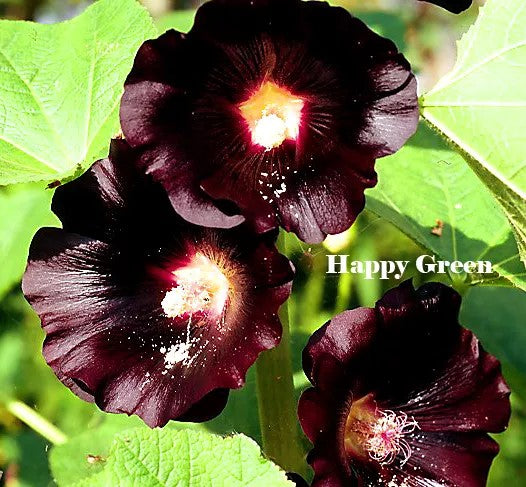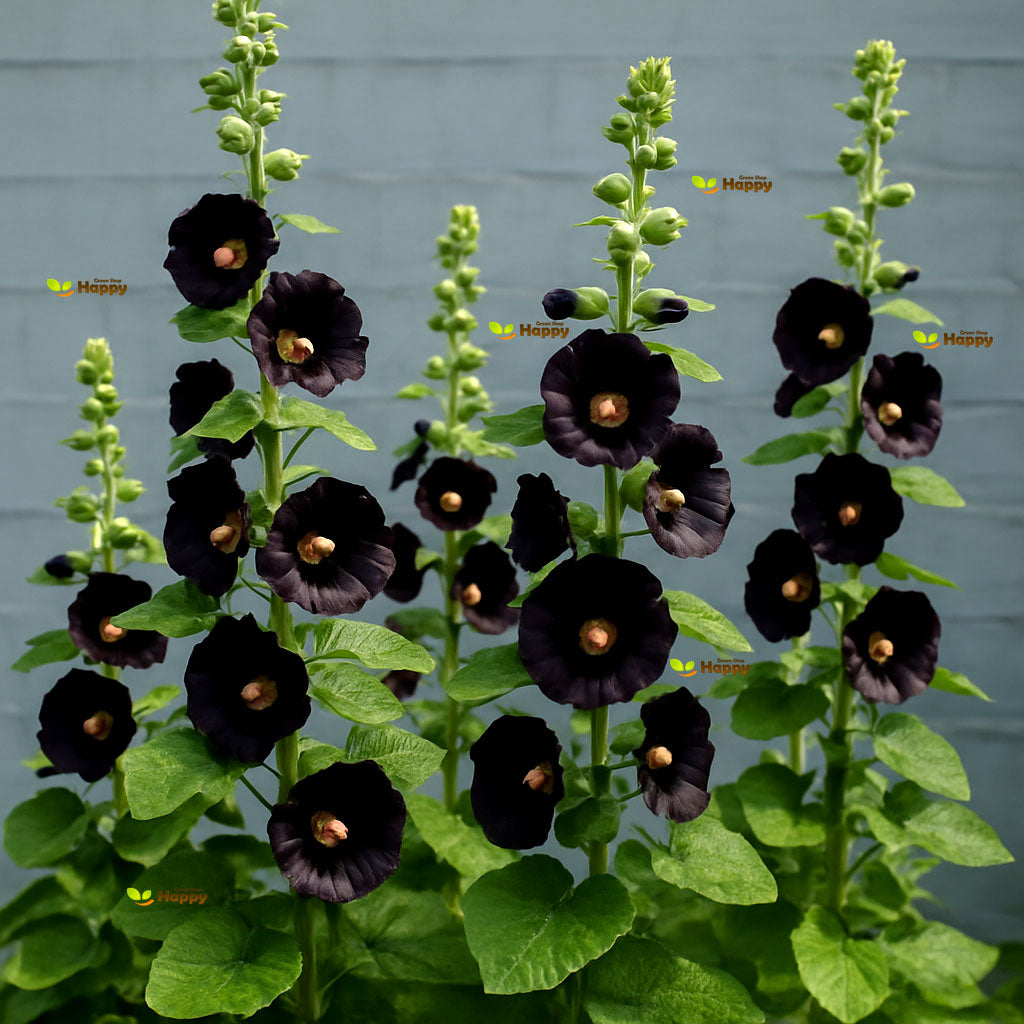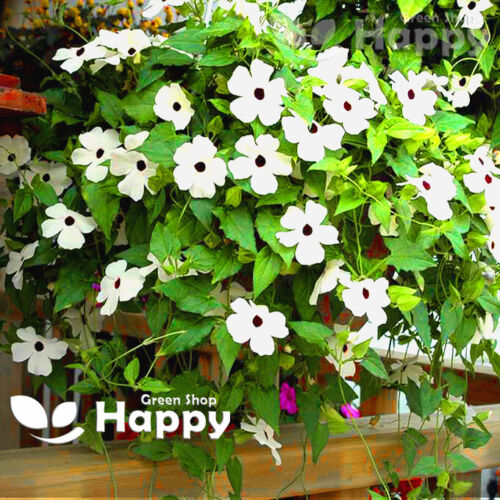Sort by:
287 products
287 products
Blue Petunia Star F1 Prio – 50 Seeds (Petunia multiflora)
Description:
Create a stunning display of vibrant blue in your garden with Blue Petunia Star F1 Prio (Petunia multiflora). This vigorous F1 hybrid produces star-shaped, bright blue flowers on compact, well-branched plants. Perfect for hanging baskets, containers, and garden borders, it blooms continuously from spring through autumn, offering long-lasting color with minimal care. Ideal for gardeners seeking high-performance, eye-catching blooms.
Key Features
-
Star-shaped, vibrant blue flowers
-
Compact and well-branched growth habit
-
Continuous flowering from spring to autumn
-
Perfect for baskets, containers, and borders
-
Easy to grow and low maintenance
Ideal For
-
Hanging baskets and window boxes
-
Patio containers and balcony planters
-
Garden borders and bedding displays
-
Long-lasting seasonal color
Sowing & Growing
-
Sow Indoors: February–April
-
Transplant Outdoors: May, after frost
-
Germination: 10–14 days at 20–24°C
-
Plant Spacing: 25–30 cm apart
-
Height: 20–25 cm
-
Light: Full sun
-
Soil: Fertile, well-drained
Care Tips
-
Deadhead regularly to encourage continuous blooming
-
Water evenly; avoid overwatering
-
Fertilize every 2–3 weeks with a balanced liquid fertilizer
-
Pinch young plants to encourage bushy growth
Blue Lupine – Seeds (Lupinus angustifolius)
Blue Lupine (Lupinus angustifolius) is a stunning annual or short-lived perennial producing tall spikes of vivid blue pea-like flowers. Blooming from late spring to early summer, it adds vertical interest and vibrant color to borders, cottage gardens, and mixed flower beds. Hardy and easy to grow, this variety attracts bees and butterflies, making it perfect for pollinator-friendly gardens and long-lasting summer displays.
Why Grow "Blue Lupine"
-
Tall spikes of striking blue flowers
-
Long flowering season from late spring to early summer
-
Hardy, low-maintenance annual or short-lived perennial
-
Pollinator-friendly and adds vertical interest
Key Features
-
Type: Annual/Short-lived perennial (Lupinus angustifolius)
-
Height: 60–90 cm
-
Flowering: Late spring to early summer
-
Position: Full sun
-
Uses: Borders, cottage gardens, mixed flower beds, pollinator gardens
Ideal For
-
Vertical color in borders and mixed beds
-
Cottage-style gardens
-
Pollinator-friendly planting schemes
-
Long-lasting summer floral displays
Sowing & Growing
-
Sow indoors: February–April in trays or pots
-
Sow outdoors: April–May after frost
-
Germination: 14–21 days at 18–22°C
-
Thin seedlings 25–30 cm apart
-
Prefers well-drained soil in full sun
-
Mulch in winter for protection in colder regions
Blue Lace Flower Seeds (Didiscus caeruleus / Trachymene caerulea)
The Blue Lace Flower is an elegant and delicate annual, much loved for its airy umbels of soft sky-blue blossoms. Each flower head resembles lacework, carried on long slender stems, making it ideal for cutting. With its light, lacy texture, this plant brings charm and movement to borders, cottage gardens, and wildflower-style plantings. It is also a superb choice for floral arrangements, both fresh and dried.
What Makes It Special
-
Produces lace-like umbels of pastel blue blooms
-
Excellent cut flower with a long vase life
-
Attractive to bees, butterflies, and pollinators
-
Adds a soft, romantic touch to borders and bouquets
Key Features
-
Botanical name: Didiscus caeruleus / Trachymene caerulea
-
Common name: Blue Lace Flower
-
Seed count: Approx. seeds per pack
-
Height/Spread: 45–60 cm tall, 20–30 cm spread
-
Position: Full sun, well-drained soil
-
Flowering period: Summer to early autumn
-
Lifespan: Half-hardy annual
Ideal For
-
Cottage gardens
-
Wildflower meadows
-
Borders and mixed beds
-
Cut flower and dried arrangements
-
Pollinator-friendly gardens
Sowing Instructions
-
When to sow: March–May indoors, or April–June outdoors after frost has passed
-
How to sow:
-
Sow seeds thinly in trays with seed compost or directly outdoors in fine soil
-
Lightly cover seeds with a thin layer of soil or vermiculite
-
Keep moist until seedlings appear (14–21 days)
-
-
Transplant/Thin: Space plants 20–30 cm apart
-
Care: Deadhead to prolong flowering; provide support in windy sites
“Blindeyes” Poppy – Seeds (Papaver dobium)
Description:
Add delicate charm to your garden with “Blindeyes” Poppy (Papaver dobium). This striking annual produces elegant, cup-shaped blooms in shades of white or pale pink with a dark central “eye,” giving it its distinctive name. Perfect for borders, cottage gardens, and wildflower meadows, these poppies attract pollinators and bring a soft, whimsical touch to any garden. Easy to grow from seed and long-flowering, they are ideal for both naturalistic and formal plantings.
Key Features
-
Elegant cup-shaped blooms with a dark central “eye”
-
Annual variety, easy to grow from seed
-
Long-lasting blooms from late spring to summer
-
Attracts bees and pollinators
-
Adds delicate charm to borders and meadows
Ideal For
-
Borders and mixed flower beds
-
Cottage and wildflower gardens
-
Pollinator-friendly plantings
-
Naturalistic or whimsical garden displays
Sowing & Growing
-
Sow Outdoors: March–April
-
Germination: 7–14 days at 15–20°C
-
Height: 40–50 cm
-
Spacing: 20–25 cm apart
-
Light: Full sun
-
Soil: Well-drained, moderately fertile
Care Tips
-
Water lightly until seedlings establish
-
Deadhead faded flowers to encourage prolonged blooming
-
Avoid overwatering to prevent root rot
-
Allow some self-seeding for future seasons
Blackberry Lily – Seeds
(Belamcanda chinensis)
Blackberry Lily is a striking perennial with bright orange, freckled flowers that bloom in summer, followed by shiny black seed pods resembling berries. Its upright clumping habit and sword-shaped foliage make it ideal for borders, cottage gardens, and ornamental plantings. Low-maintenance and hardy, it attracts pollinators and adds vibrant color to any garden.
Why Grow Blackberry Lily?
-
Bright orange, freckled summer flowers
-
Unique black seed pods for decorative interest
-
Attracts bees and butterflies
-
Low-maintenance, hardy perennial
Key Features
-
Type: Perennial
-
Height: 60–90 cm
-
Flowers: Summer
-
Position: Full sun to partial shade
-
Soil: Well-drained, fertile
Ideal For
-
Borders, cottage gardens, and perennial beds
-
Pollinator-friendly gardens
-
Decorative seed pod interest
-
Low-maintenance ornamental planting
Sowing & Growing
-
Sow indoors: February–April in seed trays
-
Sow outdoors: April–May in prepared soil
-
Germination: 14–28 days at 18–20°C
-
Spacing: 30–40 cm apart
-
Care: Moderate watering; remove weeds and deadhead for prolonged flowering
Black Seeded Lettuce 'Simpson' – Seeds (Lactuca sativa)
The Black Seeded Simpson is one of the most popular heirloom lettuce varieties, prized for its tender, crinkled, light-green leaves and mild, delicate flavour. A fast-growing, early maturing leaf lettuce, it produces abundant loose heads that can be harvested young as baby leaves or allowed to mature for larger harvests.
This variety is particularly valued for its tolerance to heat compared to other lettuces, making it a reliable choice for continuous cropping throughout the season. Ideal for fresh salads, sandwiches, and garnishes.
How to Grow
-
Sow outdoors: March – August, thinly in rows 30 cm apart
-
Sow indoors/under cover: February – March for early crops
-
Depth: 0.5 cm, cover lightly with soil
-
Thin/Plant spacing: 20–25 cm apart
-
Position: Full sun or partial shade
-
Soil: Moist, fertile, well-drained
Key Features
-
Loose-leaf heirloom lettuce with crinkled, tender leaves
-
Fast-growing and early maturing
-
Heat-tolerant and slow to bolt
-
Excellent for cut-and-come-again harvests
-
Great for salads, wraps, and garnishes
Sowing & Harvest
-
Sow: February – August
-
Harvest: April – October
Black Hollyhock – Seeds (Althaea rosea nigra)
Black Hollyhock (Althaea rosea nigra) is a striking biennial producing tall spikes of deep, dark purple to almost black double blooms. Its dramatic flowers create a bold focal point in borders, cottage gardens, and pollinator-friendly areas. Easy to grow and long-lasting, this variety attracts bees and butterflies while adding elegance and vertical interest to any garden.
Why Grow "Black Hollyhock"
-
Tall spikes of deep purple to nearly black flowers
-
Dramatic focal point for borders and cottage gardens
-
Attracts bees, butterflies, and other pollinators
-
Hardy biennial with long-lasting blooms
Key Features
-
Type: Biennial (Althaea rosea nigra)
-
Height: 1.8–2.0 m
-
Flowering: Second year after sowing
-
Position: Full sun
-
Uses: Borders, cottage gardens, pollinator planting, cut flowers
Ideal For
-
Creating vertical interest and dramatic color in borders
-
Cottage and mixed garden designs
-
Pollinator-friendly planting
-
Gardeners seeking bold, elegant biennial flowers
Sowing & Growing
-
Sow indoors: January–March
-
Sow outdoors: Directly in soil April–May
-
Germination: 14–21 days
-
Plant out after last frost, spacing 45–60 cm apart
-
Prefers full sun and well-drained soil
Black-Eyed Susan White Seeds (Thunbergia alata)
Black-Eyed Susan White is a vigorous, climbing annual producing striking white flowers with contrasting dark centers. Its trailing and twining habit makes it perfect for trellises, fences, arbors, and containers. Loved for its long flowering season and fast growth, it adds vertical interest and bright, cheerful color to any garden.
What Makes It Special
-
Bright white flowers with contrasting dark centers
-
Vigorous climbing and trailing growth ideal for vertical displays
-
Long-flowering, providing summer and autumn color
-
Attracts pollinators such as bees and butterflies
Key Features
-
Botanical name: Thunbergia alata
-
Variety: White
-
Seed count: Approx. seeds per pack
-
Height/Spread: Climbs 1.5–2.5 m; spread depends on support
-
Position: Full sun to partial shade; fertile, well-drained soil
-
Flowering period: June–October
Ideal For
-
Trellises, fences, arches, and arbors
-
Hanging baskets and containers with support
-
Vertical interest in garden beds and borders
-
Pollinator-friendly gardens
Sowing Instructions
-
When to sow: February–April indoors; March–May outdoors
-
How to sow:
-
Sow seeds 0.5–1 cm deep in pots or seed trays
-
Germination in 10–14 days at 20–25°C
-
-
Transplanting: Plant outdoors after frost, spacing 25–30 cm apart with support
-
Care: Water regularly; provide trellis or support for climbing; deadhead to prolong flowering
Black-eyed Susan Mix – Seeds
(Thunbergia alata)
Black-eyed Susan Vine (Thunbergia alata) is a fast-growing climber with masses of cheerful, brightly colored blooms in shades of yellow, orange, and cream, each with a characteristic dark center. Perfect for adding a splash of long-lasting color, this mix thrives on trellises, fences, or hanging baskets, creating a vibrant display all summer long.
Why Grow Black-eyed Susan Mix?
-
Free-flowering climber with vivid blooms
-
Long season of color from summer to frost
-
Easy to grow and fast covering
-
Great for both vertical and container gardening
Key Features
-
Type: Annual climber
-
Height: 150–200 cm
-
Flowers: Summer to autumn
-
Position: Full sun or light shade
-
Soil: Fertile, well-drained
Ideal For
-
Covering fences, trellises, and arches
-
Hanging baskets and balcony displays
-
Fast seasonal screening
-
Bright summer color in any garden
Sowing & Growing
-
Sow indoors: February–April in pots/trays at 18–22°C
-
Germination: 14–21 days
-
Transplant: Harden off and plant outside after last frost
-
Outdoor sowing: Late spring in warm soil, directly where plants will climb
-
Support: Provide trellis, netting, or string for climbing habit
Showing 261/287

